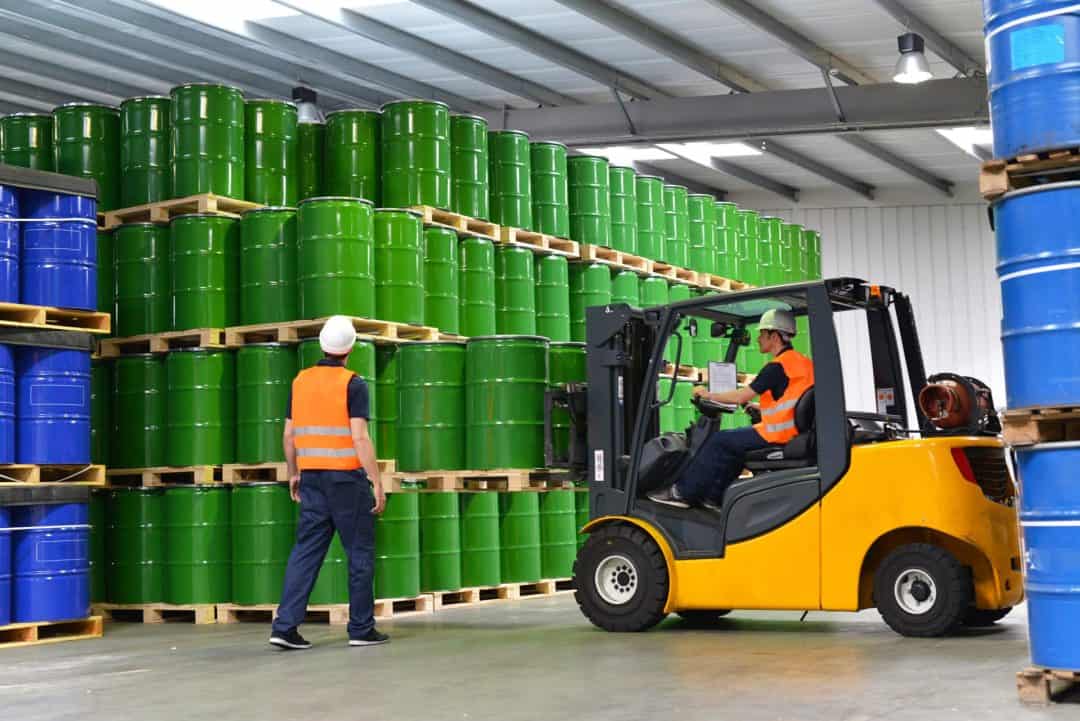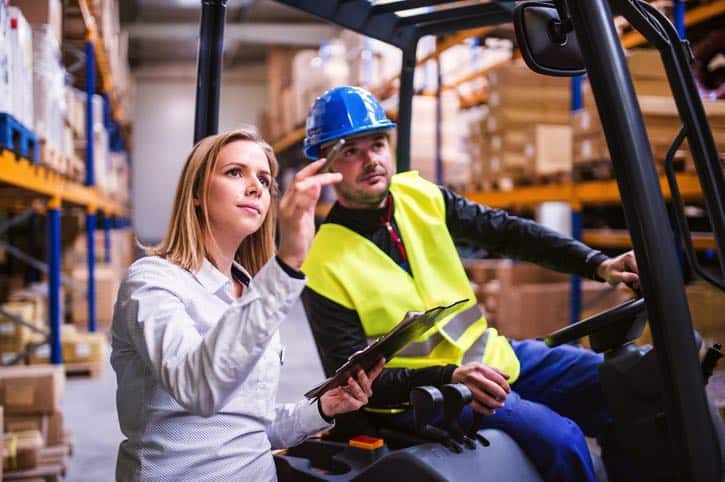Forklift to pedestrian segregation
The interplay between forklifts and pedestrian staff within a warehouse environment can create a series of potential risks if not managed with proper safety protocols. Here are some of the most significant hazards:
1. Collisions: The most apparent risk is that of a forklift colliding with pedestrian staff. Given the size and weight of forklifts, such accidents can result in severe injuries or even fatalities. Poor visibility, high operating speeds, and distractions can increase this risk.
2. Blind Spots: Forklift operators often have to deal with significant blind spots due to the design of the vehicle and the loads they carry. If pedestrians are in these blind spots, operators may not see them, increasing the likelihood of an accident.
3. Shared Pathways: In many warehouses, forklifts and pedestrian staff share the same pathways, increasing the chance of accidents, particularly in areas with poor lighting, restricted space, or corners that limit visibility.
4. Noise Levels: High noise levels in a busy warehouse can make it harder for forklift operators and pedestrians to communicate effectively or hear warning sounds, leading to potential accidents.
5. Distractions and Inattentiveness: Both operators and pedestrians can become distracted or complacent, particularly when performing repetitive tasks. This lack of attention can result in accidents if people aren’t constantly aware of their surroundings.
6. Pedestrian Unawareness: Pedestrians may not fully understand the dangers posed by forklifts, such as their wide turning radius, the time they need to stop, or how they can block an operator’s view. Lack of training or awareness can lead to dangerous situations.
7. Speeding: Forklifts moving at high speeds pose a higher risk to pedestrians as they need more time to stop and their momentum can cause greater damage in case of a collision.
8. Improperly Secured Loads: Loads that are not properly secured can fall from the forklift, potentially causing injury to nearby pedestrians.
To mitigate these risks, it’s important to enforce safety protocols like designated walkways, speed limits, and adequate training. Additionally, safety equipment like the BodyGuard Pedestrian Safety Warning System can significantly reduce these risks by alerting forklift operators and pedestrians to each other’s presence, even through solid objects.
Creating a safe distance between forklifts and pedestrians
The BodyGuard Pedestrian Safety Warning System is designed specifically to mitigate the risks associated with the interaction between forklifts and pedestrians in a warehouse environment. Here’s how it addresses these issues:
1. Collision Prevention: The BodyGuard system detects pedestrians in the vicinity of the forklift using tags worn by the staff. Even if a pedestrian is in a blind spot of the forklift, the system can detect their presence, thus drastically reducing the chances of collisions.
2. Enhanced Visibility: The system doesn’t rely solely on the operator’s vision; it can detect pedestrians through solid objects, making it useful even in low-visibility conditions or areas with complex layouts.
3. Shared Pathways: When forklifts and pedestrians share the same pathway, BodyGuard provides an additional safety layer by alerting both the pedestrian and the operator of each other’s presence.
4. Addressing Distractions: The system provides an immediate alert when a pedestrian is detected nearby, helping to counteract moments of distraction or inattentiveness on the part of the operator or pedestrian.
5. Adjustable Detection Range: The BodyGuard system allows you to set a detection range from as close as 1.5m to up to approximately 9m from the sensor on the vehicle to the pedestrian. This can be tailored to the specific needs and layout of your warehouse.
6. Clear Alerts: The system uses a human voice alert saying “look out! person near you” and a flashing visual signal to alert the driver. Simultaneously, the pedestrian’s tag vibrates to warn them of the approaching vehicle, ensuring both parties are aware of the potential hazard.
BodyGuard addresses the issues:
By incorporating these features, the BodyGuard Pedestrian Safety Warning System significantly reduces the risks associated with forklifts and pedestrians sharing a workspace, thus contributing to a safer warehouse environment.
BodyGuard is an Australian solution:
BodyGuard Safety Solutions is a 100% Australian-owned and operated company. We take pride in designing and manufacturing our systems right here in New South Wales, ensuring top-quality and reliability in every unit. Our locally-based operations also mean we can offer you excellent technical support, ensuring the system’s seamless integration and operation within your workspace.
Invest in your warehouse safety today:
The BodyGuard Pedestrian Safety Warning System is the optimal solution for bolstering safety measures within any warehouse environment, making it a crucial investment towards maintaining a secure and accident-free workspace. Contact us now to see how we can keep your pedestrian staff a safe distance from all your forklifts.
